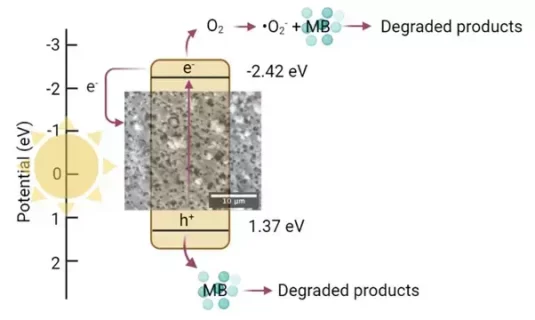Highly Porous Bi(III) Modified Rice Husk Silica Photocatalyst for the Photocatalytic Removal of Cationic Methylene Blue
Authors
-
Normawati Jasni
 1
1
-
Anwar Iqbal
*
 1
1
- N. H. H Abu Bakar 1
- Dede Heri Yuli Yanto 2
- Hor Jia Yi 1
- Noor Haida Mohd Kaus 1
- Mohd Norazmi Ahmad 3
- Sri Mulijani 4
Abstract
A series of bismuth-silicate photocatalysts were synthesized via the sol-gel method for photodegradation of methylene blue (MB) under sunlight irradiation, utilizing rice husk ash as a silica precursor. The scanning electron microscopy/energy dispersive X-ray (SEM/EDX) analysis detected Bi content in 3-10 wt% range. Furthermore, it can be seen that the porosity decreased as the Bi concentration increased. The N2 adsorption-desorption analysis indicates the presence of mesopores with an average diameter of 297-554 Å with Brunauer–Emmett–Teller (BET) surface area of 5.6-30.5 m2/g. The photocatalyst with a Bi concentration of 4 wt% (RHSBi-A2) was the most active in the photodegradation of MB; the removal reached 90% within 4 h. The photodegradation is proposed to be driven by superoxide ( ), hydroxyl (•OH) radicals, and hole (h+) based on the valence band (VB) and conduction band (CB) potentials. The porous silica framework is proposed to act as an electron reservoir, allowing better MB adsorption and enhancing light absorption.




